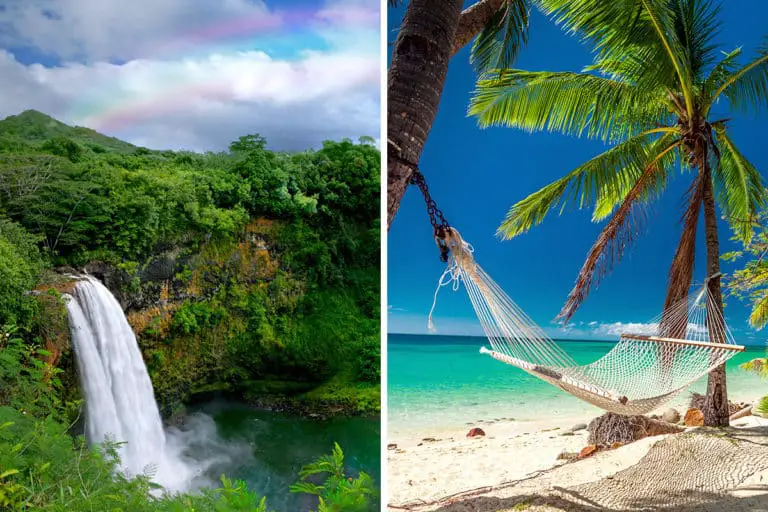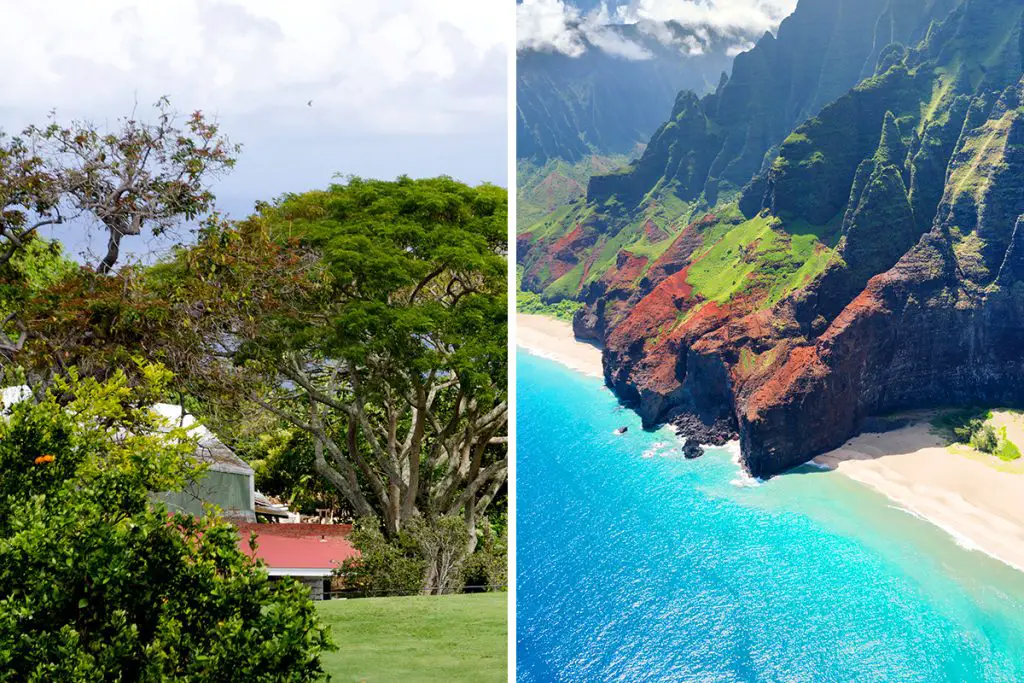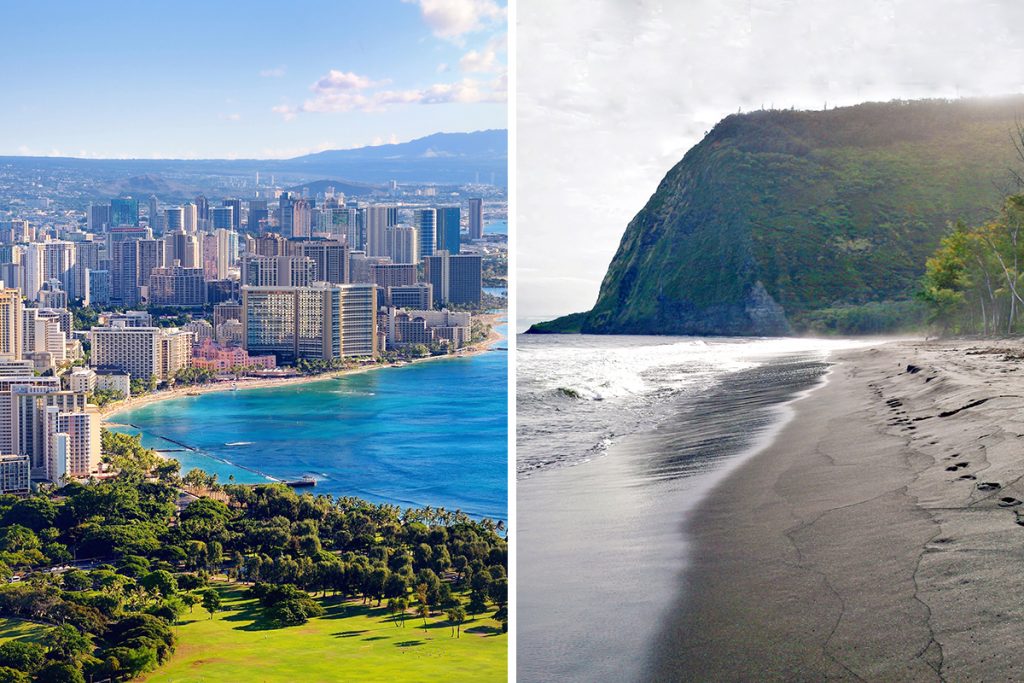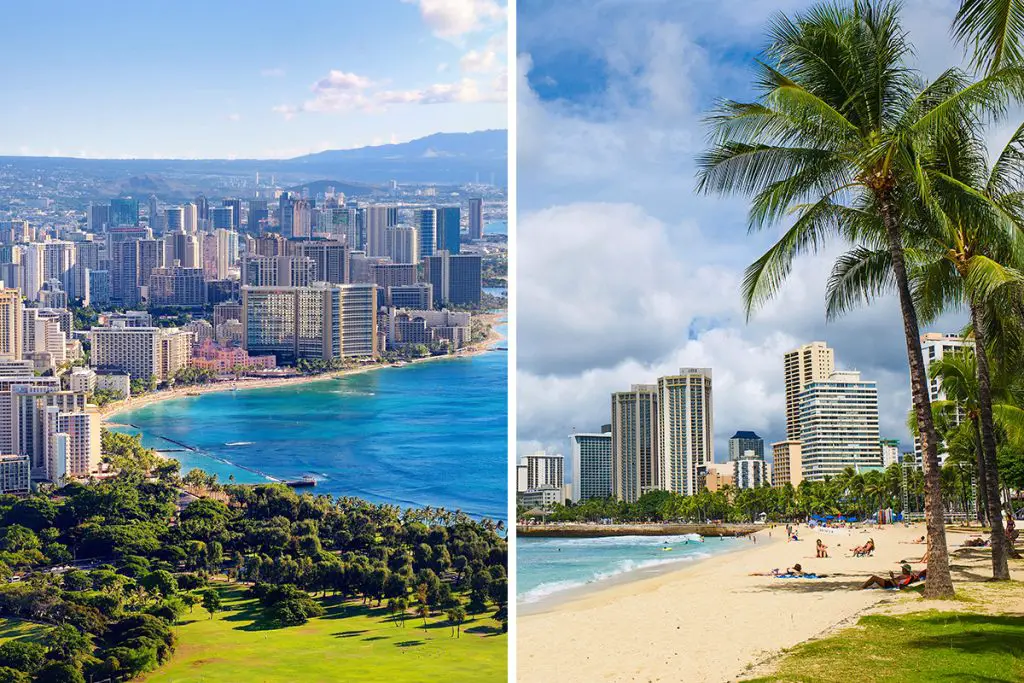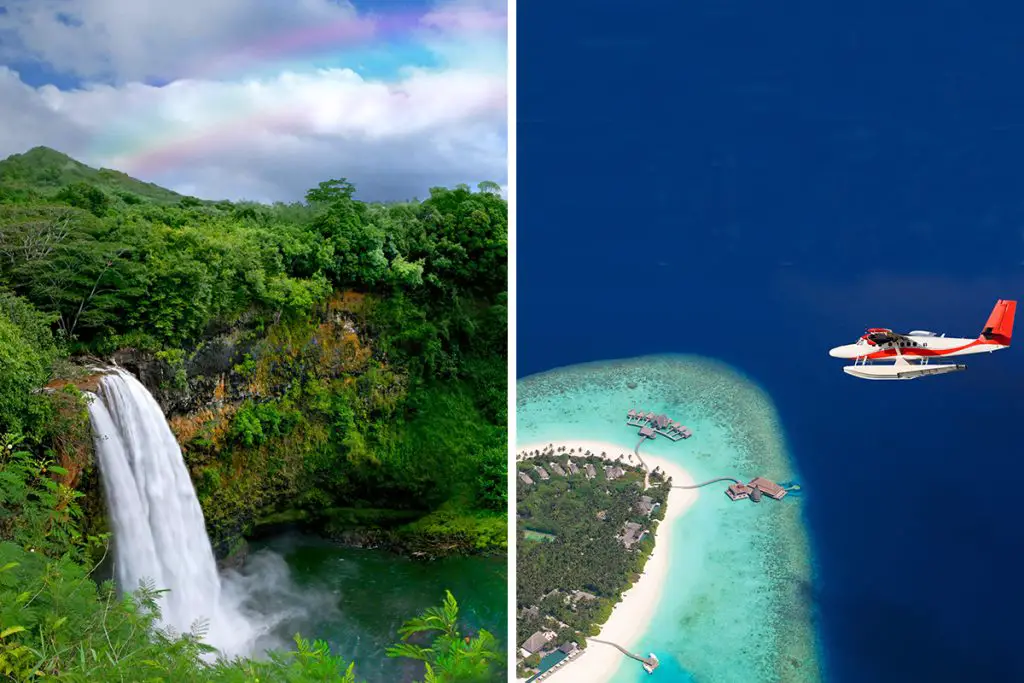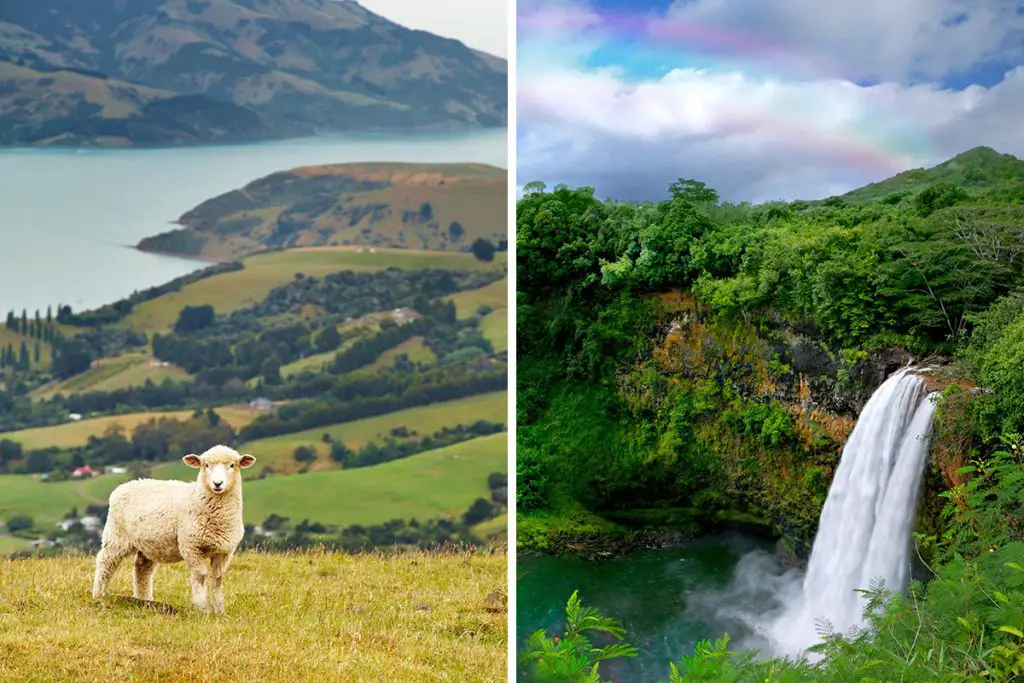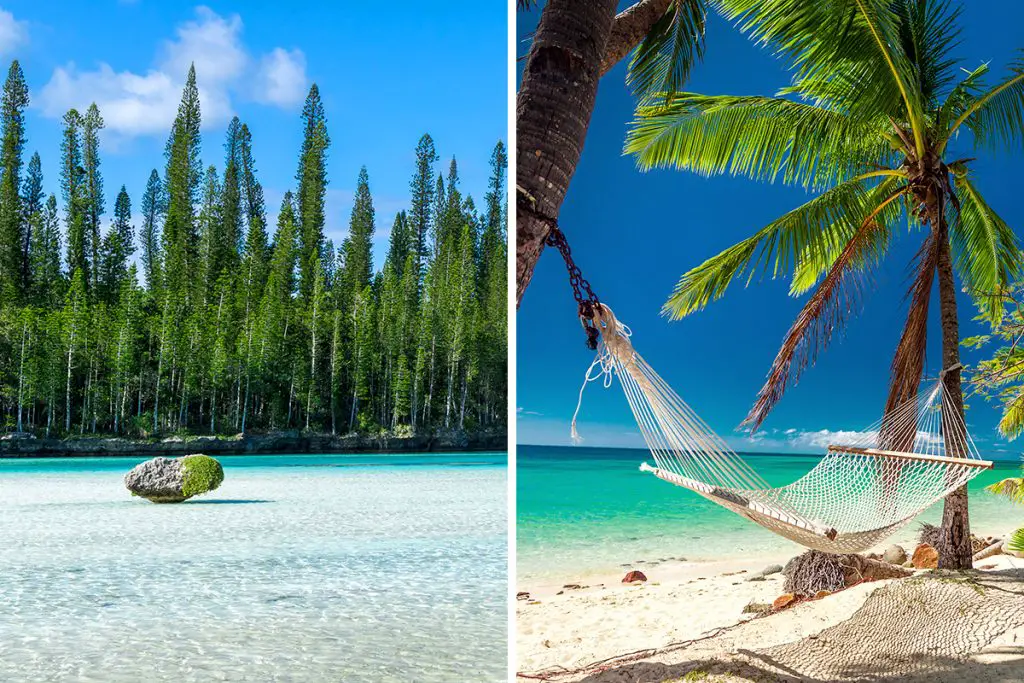Hawaii is the tourism crown that has enticed generations in its well-loved quirky culture and islands full of adventures. While Fiji is a slowed-down take on a tropical island experience, with an emphasis on rest and relaxation.
Given these two, it should be a matter of “which one should you go to first?”.
Hawaii
Hawaii is so famous and so mainstream that just a mere google search can provide you with an abundance of draws to choose from. Apart from its prominent beautiful beaches, Hawaii holds quite a roster of natural quirks for exploring in its many islands.
Hawaii’s fabled charms are still consistently making their rounds across many platforms. You can spot Hawaii in a wealth of travel articles and YouTube vlogs all over the world.
Imagine a perfect combination of remarkable natural features and a mass-appealing culture. Plus, add entertainment like no other. Something can surely tell you that Hawaii will stay at the top for years on end.
What Makes Hawaii Unique?
Beaches Galore
With 137 islands to boot, beaches are littered all across Hawaii, surrounding the islands in magnificent beauty. You can easily assume the sheer number of beaches that are readily available for everyone. From the biggest island of Hawaii to the smallest Kahoolawe, expect to find beaches that offer something for everyone.
Hawaii can give you its 100+ appealing beaches speckled all over. Each having exceptional qualities further proves how jam-packed Hawaii is. Thanks to their impeccable draws and quirks, you will find that you can almost have everything on any of Hawaii’s beaches.
Enjoy opportunities for various watersports. Such as snorkeling, diving, surfing, stand-up paddleboarding (SUP), to even sunbathing, and more. Hawaii definitely has everything down to a tee. Fortunately, many of Hawaii’s beaches are open to the public, making them accessible to everyone — locals and tourists.
Hawaii’s beaches are as diverse and unique as the many islands the state has. First-time tourists may have trouble deciding where to visit.
To narrow down everyone’s options, here are some of the most well-known:
Waikiki Beach
Located in Oahu, one of the eight main islands, Waikiki Beach best represents Hawaii’s tourism scene. Arguably the most famous in Hawaii, Waikiki offers everything you could ask for in a famous beach spot.
The beach has practically witnessed Hawaii’s development over the years. Form the tumultuous World War 2, to today’s media and internet charms. Waikiki should be any visitor’s go-to beach when in Oahu.
Waikiki Beach features a sweeping white sand beach that stretches for over 3.2 km or 2 mi. Apart from its obvious natural beauty mostly consisting of crystal clear turquoise-blue waters and perfect weather conditions, the beach is also lined with an abundance of hotels and resorts.
Big Beach
By the name itself, Big Beach is said to be the largest beach in Hawaii. With dimensions of over a mile long, and a hundred feet or 30 meters wide, Big Beach is spacious and filled with fun and thrills. Especially for surfers.
This surfers’ paradise offers powerful wave breaks that are suited for surfers and bodyboarders. Waves tend to become much more prominent during the winter months here, even advanced swimmers are prohibited.
Makapu’u Beach
Situated in Oahu as well, Makapu’u is famous for its rather peculiar physical characteristics and a legend involving a goddess. On a ledge near the cave, there’s a black stone with eight bulges resembling human eyes. The kinolau was thought to be the force behind the stone. It is a physical manifestation of a supernatural woman named Makapu’u, which means “bulging eyes,”
Legends aside, Makapu’u is nothing short of picturesque. Nestled in a small cove, the beach features mounds of sand peculiarly covered in green moss. Just above the cove, the Makapu’u Lighthouse stands tall. As if serving testimony to Hawaii’s immense beauty that is worth celebrating.
Waimea Bay
Perhaps standing next to Waikiki, Waimea Bay is one of the most famous beaches in Hawaii. Known for sporting the best waves and surf breaks on the island, Waimea’s usual beach draws only come second.
Waimea’s best-selling points are its enormous waves that provide that sweet Hawaiian surf experience. Waves can tower over 30 feet (or 9 m), luring surfers from all over the world by the thousands every year. Every winter where waves are at their highest and strongest, swimming isn’t allowed here.
However, during the summer season, which is the perfect season for beach bums, the beach is often packed. The beach is also perfect for other activities such as swimming, snorkeling, SUP, or just plainly lounging under the sun.
Wailea Beach
Wailea Beach is known among high-rollers visiting Hawaii. Thanks to its roster of luxury stays and amenities, the beach is a plush area best represents Hawaii’s fancy side. Wailea Beach houses many of the world’s illustrious hotel and resorts brands. Expect to see names such as Four Seasons, Hilton, Waldorf Astoria, and Marriott.
With Wailea’s list of luxury players, the beach is perhaps the most exclusive area in Hawaii. And on top of its opulence, the beach also has gorgeous views of the ocean, set on a background of lush greens and white-sand beaches. A bonus to the beach’s allure, whale watching is especially special from November to April.
Lanikai Beach
The beach prides on its classic draws. It offers fine white sand, crystal turquoise waters, and gentle surf. Thanks to its family-oriented atmosphere, Lanikai is a go-to for visiting families.
As if the family-friendly setup isn’t big of a draw enough, the beach is also pet-friendly. So families with pets or any visitors traveling with their dog can have that sweet beach memory together. As for activities, Kayaking is best here, on top of swimming, SUP, and snorkeling.
Volcanoes
Thanks to a series of volcanic eruptions eons past, they have given birth to Hawaii’s majestic islands and gifted landscapes. Unlike continental islands, Hawaii isn’t born from moving plates beneath the earth. Volcanic eruptions have caused them to rise up and form.
For thousands, and perhaps even millions of years, those series of eruptions have given birth to Hawaii. They have carved its landscapes and supported even its biosphere. The volcanic elements that have covered the island are responsible for the lush thriving plant life on the island. And when plant life is thriving, the rest follow suit.
Volcanoes did a lot of work on Hawaii’s landscape and flora and fauna, but nature can still get violent. It cannot be dismissed that their presence can still remind people of their potential destruction. Hawaiians may have thrived from the volcanoes’ minerals yet they can destroy the islands as well.
Fortunately, Hawaii’s volcanoes today aren’t nearly as destructive as they used to, and some can even be explored via trekking tours.
Kilauea and Mauna Loa are two of the world’s most active volcanoes found on Hawaii Island. The last time Mauna Loa erupted was in 1984, and Kilauea last erupted between 1983 and 2018. Maunakea, Hualalai, and Kohala are some of Hawaii Island’s other volcanoes. Leahi, on Oahu, and Haleakala, on Maui, are two other famous volcanoes in the state.
Surfing Scene
Hawaii’s surfing scene has to be one of the most sought-after in the world, if not the most. Considered as one of surfing’s meccas, Hawaii offers surf breaks and waves suitable for the absolute beginners to the hardcore pros.
Most people don’t know that Hawaii is the birthplace of surfing. First introduced on the shores and breaks of Hawaii, the art of surfing on wooden boards was a well-respected craft even then. Now, it has become an international watersport with events and competitions, and Hawaii is at the forefront.
To experience Hawaii’s legendary surf breaks, you can visit the Oahu and the northern islands. These areas are best during the winter months of November through April. It is during this time that you can experience the best breaks, where waves tend to be stronger and larger.
However, if you visit during the summer, you can still head to the southern Oahu for those surf-worthy waves. You can also find excellent surf breaks in Kauai and Maui.
One of the Most Expensive Destinations to Visit
Consistently ranked as one of the most expensive places to travel to, Hawaii’s costs are an important thing to consider. While airfare to Honolulu is affordable, the prices around the islands will take a well-thought-out budget plan. If you’re a high-rolling tourist then splurge on.
Hawaii is also the most expensive US state to live in. Costs and expenses here are even greater than that of commercial powerhouses such as California, New York, and Illinois. Expect to be met with prices that can be ridiculously high.
Despite the level of costs, Hawaii has an abundance of accommodations of varying ranges. From luxurious hotels to budget stays often offering package deals, you can still have a way around the archipelago’s high costs.
Due to Hawaii’s remote location from the mainland US, shipping supplies and goods tend to be costly. The prices of goods you will encounter in Hawaii are the result of expensive logistics. Shipping via sea or air can impose varying tariffs on import goods.
On top of expensive goods and supplies, Hawaii’s fame makes it one of the most highly in-demand destinations in the world. This in turn brings a slew of visitors yearly. High demand will always equal high prices.
Fiji
One of mother nature’s best creations, Fiji’s beauty is in a league of its own. There may be several places in the world dubbed as one of the most beautiful but Fiji stands above them all. With 300 islands, Fiji offers the best inland adventures and underwater marvels.
A diving, rafting, and surfing capital all in one, this Pacific jewel is a powerhouse packing a plethora of diverse draws. Yet with its fame, the island feels exclusive, raw, unspoiled, and special. Given its outlandish beauty and charm, Fiji deserves a spot on every travel bucket list out there.
What Makes Fiji Unique?
The Soft Coral Capital of The World
Fiji has always been famous for its otherworldly landscape that seems to be its best physical features. But once you go under the archipelago’s fabled waters, there’s an even enticing, more outlandish thing to behold.
Fiji was dubbed as the “Soft Coral Capital of the World” over 29 years ago by Jacques Cousteau. The archipelago is home to soft corals that sports an explosion of color you won’t see in any other place in the world.
The archipelago’s underwater world holds a wonder unlike any other. Expect to see shallow lagoons rich with marine life, intriguing caverns, and canyons. And fascinating marine walls covered in coral of different colors are the highlights beneath the waves.
To see the best of the best, dive under the water of its main islands: Viti Levu and Vanua Levu. These islands hold the ultimate reason why Fiji has garnered such a reputation. Viti Levu’s northeastern reaches have an unspoiled terrain.
The conditions in Viti Levu offer a variety of experiences perfect for divers of all levels. You can expect to encounter the most brilliant assortment of Fiji’s distinctive soft corals. Which can be found in reef flats and canyons, tunnels, and swim-throughs.
You can also head to Vanua Levu’s southern coasts and visit Savusavu. The Namena Marine Park is ideal for spotting everything underwater. You can see the tiniest invertebrate to the largest pelagic – including the majestic scalloped hammerhead.
Water Activities
When it comes to snorkeling and diving, you surely won’t have a shortage of places to visit in Fiji. Aside from the exquisite diving and snorkeling experience the main islands can give you, you also have the outer islands on your roster.
Taveuni, Kadavu, and Beqa are Fiji’s three largest offshore islands. They offer some of the most memorable and excellent diving in the archipelago. These places are fit for the more seasoned explorers.
Diving and snorkeling aside, you can also do other watersports in Fiji. The archipelago also sports the best surf, sea, and swell in the Pacific, and maybe even more. Often competing against Tahiti and Hawaii, Fiji is one of the best destinations for surfing.
Jet skiing is also big on Fiji, thanks to its islands awash with beaches of a different caliber. You can expect to see plenty of beaches ridden with jet skis and frolicking beach bums.
If you’re thinking of a more inland adventure, white water rafting is also a thing in the archipelago. Unlike most places in the Pacific, Fiji sports majestic rivers and waterfalls. These features make for excellent river adventures.
But if you’re idea of water activity is more laid-back, and less adrenaline, with a side of exploration, try cruising around the many islands of Fiji. While you most likely can’t explore all of its 333 islands, Fiji offers a cruise to see the best it offers. Cruises have all-inclusive packages for everybody, whether you’re cruising solo, or with a family.
Surfing
Fiji’s surfing scene and culture are top-notch and it can compete against the charms of Hawaii and Tahiti themselves. Most of Fiji’s best surf breaks can only be accessed by boat so expect to have a bit of an adventure before getting into the sweet stuff.
Fiji’s best wave breaks are located over reefs. Expect to catch shallow, powerful, hollow, and fast waves. These types of breaks are recommended for more experienced surfers. Intermediates, pros, and above only.
Here are some of the most famous surf spots in Fiji, and arguably, the world:
Cloudbreak
Cloudbreak is a world-class wave that takes advantage of the full force of the southern swells. It’s Fiji’s most consistent wave, with all tides and swell sizes surfable. It’s also the most difficult, unforgiving, and demanding.
With constant barrels from 0.6 to 6 meters (1.9 to 19.6 ft), this left-hand reef break is an incredible large wave site as well. They’re hollow and break over razor-sharp coral, giving even the most experienced surfers a fun yet daring challenge.
Restaurants
Consider as Cloudbreak’s little brother, Restaurants is more predictable. However, it can challenge even the most seasoned pros. Waves tend to turn fast and hollow with a massive swell and a high tide. The Restaurants offer the epitome of surf perfection with the kind of wave that is the stuff of every surfer’s dream.
A mid to high tide is ideal for Restaurants. During the summer, it frequently becomes flat due to its location.
Swimming Pools
Swimming Pool is a more tamed spot, best catering to beginners and intermediate surfers. However, that doesn’t mean it’s less challenging. Although the wave is short, it is one of the most enjoyable in Fiji.
It features a steep wall on its wide-open face, but it is less powerful and slower than other sites in the archipelago. It is deep enough for beginners to feel secure during mid to high tide.
Frigates
The Frigates’ sheer power can easily compete against Cloudbreak. Waves in Frigates Pass can be as strong, powerful, and consistent as its Namotu counterpart. Frigates is one of Fiji’s longest waves, located off Yanuca Island, south of Viti Levu.
It provides some fun waves for intermediate surfers with a small to medium swell. The barrels become quite difficult around 2 meters or 6 feet, and they become extremely terrifying when they go above 3 meters or 10 feet.
Natural Beauty
Fiji wins the natural beauty award, thanks to its collection of awe-inspiring landscapes. Upon getting into the archipelago, you’ll easily notice the immense beauty it has. Imagine lush greens, contrast with turquoise blue, with a wealth of formations in between. Fiji-lovers even say that it is so beautiful, you’ll have a lot to take in.
You might be overwhelmed by the sheer sights of Fiji. You can marvel at stunning waterfalls and clear waters, vibrant sea life, and long stretches of sandy beaches. It is best to see the island by trekking and boating
You can also get on trips and tours across the island. Hidden waterfalls like the stunning Tavoro Falls and the Signtaga Sand Dunes will surprise you. You may also come across a range of flowers, such as Asian orchids and Cattleya hybrids, when traveling.
If you’re not keen on trekking, you can also take a cruise around the islands, enjoying stunning vistas while relaxing. Relaxing should be taken as an art form in Fiji. Even getting between island via boats are enough to provide you with the archipelago’s predominant beauty.
For the Instagram-savvy folk, you can’t take a bad picture while in Fiji, even you will be jealous of your posts. Imagine walking around a place teeming with postcard-perfect views, you might now want to leave.
Is Fiji or Hawaii Better?
Fiji and Hawaii are two of the most sought-after destinations in the world. A hundred articles have been written about how great they are, and the testaments still stand to this day. The answer to the question of whether which is better will depend on what kind of holiday you want.
If you want a more action-packed, sometimes rowdy time on a tropical island in the Pacific, then Hawaii is the better choice. It appeals to active and outdoorsy travelers seeking a fulfilling time.
Fiji on the other hand is made for relaxation and appreciating unspoiled natural beauty. In an archipelago where everything seems to inspire R&R, Fiji is the best choice for a real getaway. And if you like to throw in a bit of a thrill, you can always surf.
FAQ
Is Fiji Similar to Hawaii?
Fiji and Hawaii display tons of seeming similarities. You can easily recognize their near-identical cultures and natural features. However, they are both distinct and special in their own ways, making them worth visiting. Fiji and Hawaii’s names are consistently ranked high on the world’s must-travel lists.
How Is Fiji Different From Hawaii?
Hawaii is more developed and more experience-focused. The US state offers plenty of adventures, natural beauty, and stunning beaches. While Fiji offers the same, Hawaii offers a wide range of accommodations, from the luxurious to the budget-friendly.
Fiji is meant for relaxation. The archipelago has considered their kind of R&R an art form. In contrast, Fiji is more resort-focused, providing amenities and facilities that can even rival Hawaii. But you can also experience a slew of adventures in Fiji, like whitewater rafting, diving, and snorkeling.
Culture-wise, Fiji, and Hawaii are different down to the roots. While Fiji’s cultural overtones may look the same as Hawaii’s, the archipelago is different. It is of Melanesian descent, mixed with Polynesian social undertones thanks to years of mixing with Polynesians. Most probably from Tonga.
The proximity of their cultures has created some sort of similarity, often confusing them. Both Hawaii and Fiji in general are centered in warmth and community. It is part of the reason why it is so easy to visit these destinations thanks to their respective cultures.
Which Is More Expensive – Fiji or Hawaii?
These destinations don’t play low when it comes to costs. Thanks to their isolated locations and tourism demand, expect to be paying high prices. However, on a closer look, Hawaii is the more expensive choice.
Hailed as one of the most expensive destinations to travel to, Hawaii’s costs can be dramatically higher than Fiji’s. For one, basic utilities in Fiji typically cost around 50 to 212 USD, while Hawaii sets you back around 175 to 500 USD.
For your everyday expenses, it’s important to have an idea of how things cost in both destinations and then you can budget from there. For example, an average inexpensive meal in Fiji can cost 3 to 7 USD, and 12 to 23 USD in Hawaii. You can surmise that Hawaii is much more expensive; but for the seasoned traveler, it’s not a hindrance, but a cause to budget better.
Fiji or Hawaii for Family Holiday?
With a wealth of accommodation and plenty of activities for any age level, Hawaii is the more ideal family holiday destination. The US state is more geared towards providing activities and entertainment to everyone. That is in addition to its already beautiful landscape.
In Hawaii, families can have a wide range of hotels and resorts to choose from. And a lot of these top-rated stays have services, amenities, and packages perfect for children and adults.
Plus, Hawaii’s landscape offers plenty of opportunities for older children to have adventures. They can try out some water activities such as surfing, diving, sailing, kayaking, and many others. If you want more inland and outdoorsy fun, you can trek around the many islands, and maybe even volcanoes.
Fiji can also be an ideal family holiday destination, but you can’t find as many activities in Fiji as Hawaii. Instead, Fiji feels more intimate, exclusive, luxurious, and more relaxing. The islands of Fiji are best for honeymooning couples, friend groups, and all-adult families.
Fiji or Hawaii for Couples?
Given Hawaii and Fiji’s sheer natural beauty, and a roster of top-rated resorts, both are perfect for couples on a holiday. However, it will ultimately depend on what a couple wants to experience in their time in the tropical Pacific.
Hawaii has several areas that evoke that certain vibe for a couples-only romantic trip. However, the best places have to be outside Oahu. The island of Maui is a favorite among couples visiting Hawaii. Thanks to the island’s immaculate resorts, breathtaking landscapes, and a variety of activities to choose from.
Fiji on the other hand feels more intimate and inclusive, further making that romantic time on the island more special. Thanks to the luxury Fiji provides, couples can expect to have everything they need in the romantic getaway provided.
Fiji or Hawaii for Honeymoon?
Honeymoons in Hawaii are typically less exotic than those in Fiji, where the isolation of the tiny Fijian islands gives you a sense of being far away.
Fiji is a wonderful choice if you merely want to enjoy the beach, water activities, and in-house restaurants. However, Hawaii may be a better alternative if you want a wider range of activities and dining options.
Hawaii and Fiji Holiday Packages
Fiji Holiday packages are best offered by airlines and global hotel brands. They aim to provide an experience unlike any other in perhaps the most beautiful locale in the Pacific. Holiday packages often include stays and flights, a couple of adventure excursions, and tours around the main islands of Fiji.
Fiji is culturally rich without being too saturated by tourism. The island openly invites visitors to take part in cultural traditions as well. The best package is the kind where you’ll experience what Fiji is really all about: slow and relaxed yet adventurous and curious.
Hawaii on the other hand is activity-oriented. Holiday packages are packed with activities that urge you to discover Hawaii and all its magnificent landscapes. You’ll be hopping beaches, trekking volcanoes, and exploring other islands.
Hawaii houses the best resorts that offer more family-friendly packages. Expect to have some packages that include family adventures, safe and appropriate for kids of different ages.
Tours and excursions to other islands can have you seeing the contrast and diversity that lives within Hawaii’s prominent beauty. From the bustle of Oahu, the garden island of Kauai, to the opulence of Lanai, Hawaii’s holiday packages are as jam-packed as the archipelago itself.
Hawaii and Fiji Cruise
Thanks to their respective beauties, both Hawaii and Fiji are some of the most famous cruise stops in the Pacific, and in the world.
With Hawaii and Fiji, you will have magnificent beaches, picturesque views, and unique charms all wrapped together. You can expect to have rich itineraries when cruising to these Pacific gems.
Fiji’s magic can already be felt like the ship inches closer to the islands while you marvel at its fairytale-like landscape. The Melanesian gem is known for its breathtaking beauty. It is said that it can even surpass Hawaii.
Fiji cruise itineraries include visits to different cultural capitals and of course, its beaches. They even include dive spots and several inland marvels.
Hawaii takes cruising up a notch. Perhaps one of the most loaded destinations in the world, expect your Hawaii cruise to be restless. Itineraries include different stops in four of its main islands.
And while in each of these islands, expect to find a never-ending list of draws that will surely give you tons of experience.
What’s Bigger – Fiji or Hawaii?
Both Fiji and Hawaii are archipelagos comprising more than a hundred islands. They seem to have similar geographical arrangements.
Fiji is bigger than Hawaii with a total landmass of approximately 18, 274 sq km or 7,056 sq mi. Accounting for all of Hawaii’s islands included in the official territory of the US, the island has approximately 16,636.5 sq km or 6,423.4 sq m.
Where Are Hawaii and Fiji?
Hawaii and Fiji form part of Oceania, located right at the Pacific Ocean. Hawaii, despite being part of the USA is the only insular state in the country. The archipelago of 137 islands is located in the Northern Pacific Ocean.
Fiji, on the other hand, is an independent nation found leagues south of Hawaii, on the Southern Pacific Ocean. Surrounded by the Koro Sea, Fiji’s nearest neighbors are Vanuatu to the east, Samoa to the west, and Tonga to the south.
How Far Is Fiji From Hawaii?
Despite both being in the Pacific Ocean, they’re located far from each other. Fiji is located roughly 5,100 kilometers or 3,200 miles southwest of Hawaii, directly.
How Long Does It Take to Get From Fiji to Hawaii?
Traveling to Hawaii from Fiji can approximately take around 11 to 12 hours by flying.
Can You Fly From Fiji to Hawaii?
Taking a flight from Fiji’s capital Suva to Honolulu, Hawaii is the single best way to travel between these destinations.
Can You Fly Direct From Fiji to Hawaii?
You can fly direct and nonstop from Nadi in Fiji to Hawaii. However, what is more convenient depends on where your starting point in Fiji is. If you’re staying anywhere near Nadi, then a flight from there to Honolulu, Hawaii is more time-effective.
How Far Is Fiji From Hawaii by Plane?
By plane, Fiji is 5,100 kilometers or 3,200 miles from Hawaii, directly.
How Many Nautical Miles Is Fiji From Hawaii?
Fiji is approximately 2,745 nautical miles from Hawaii.
How Far Is It From Hawaii to Fiji by Boat?
If you’re going to sail from Honolulu, Hawaii to Suva, Fiji, the distance is about 2,745 nmi.
Are Fijians and Hawaiians Related?
Fijians are Melanesian by descent. But Polynesian people from Tonga have interacted with Melanesians of Fiji for centuries. This has resulted in a mixture of ethnicity and culture. You can even observe parallels with the Fijian and Hawaiian cultures.
Fijians are distinct because of their distinct genetic and ethnic mix of Melanesian and Polynesian roots. This makes them somewhat related to Hawaii. Hawaiians on the other hand are descended from the Polynesian people that migrated from different corners of Oceania.

